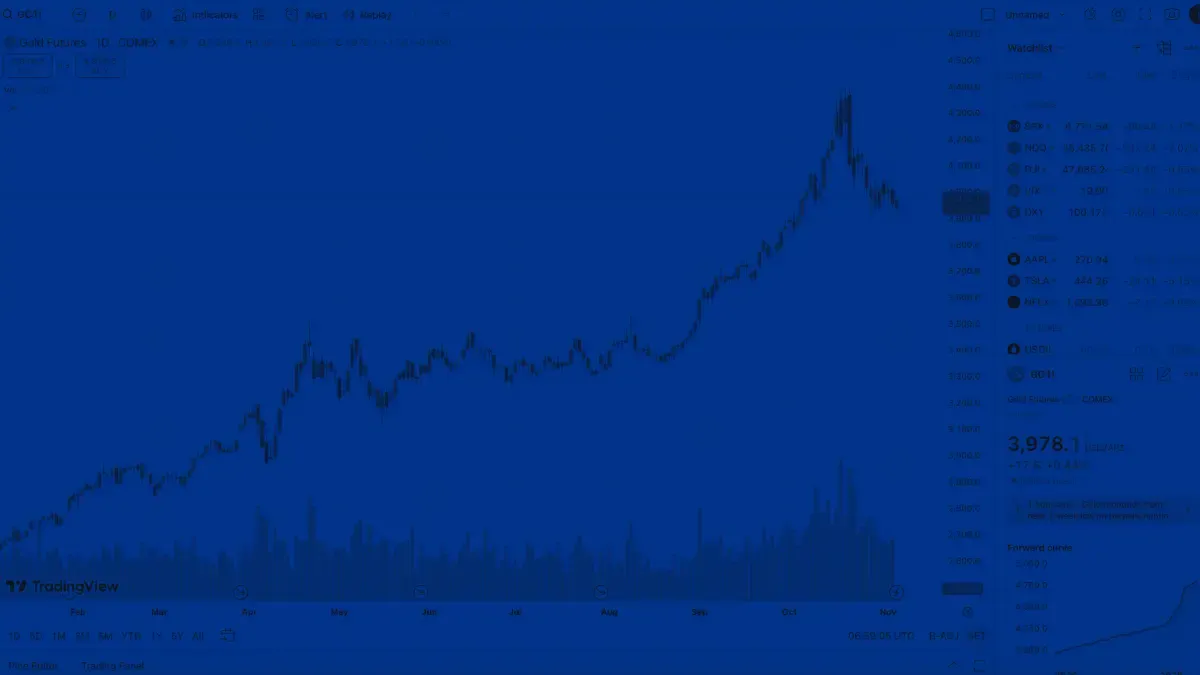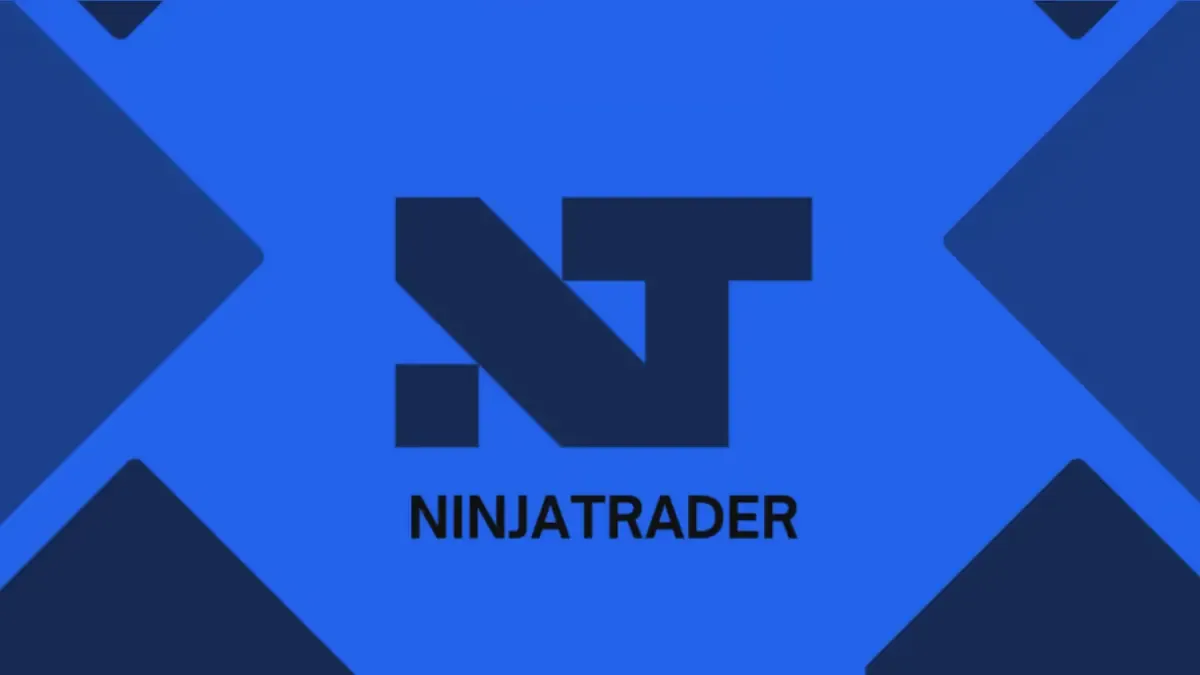"I made $3,500 in an hour trading ES futures!"
We hear statements like this almost weekly from newcomers. What they rarely mention is the $7,000 they lost the next day using the same approach--and how profit is not guaranteed in trading.
What is day trading futures? It's opening and closing positions within a single session to capture short-term price moves, but with consequences both exhilarating and brutal. A single ES contract controls $230,000 in market value with just a $12,000 margin, creating profit (and loss) potential that stocks simply can't match.
This leverage, combined with the exceptional liquidity of futures markets, where E-mini S&P 500 contracts trade over 2 million times daily, -- creates an environment where skilled traders find consistent opportunities. Yet these same attributes make futures day trading exceptionally demanding. Industry data confirms what we've observed firsthand: 80-90% of new futures traders lose money (Internal Sources).
The problem usually isn't market knowledge. Most struggling traders understand charts and indicators. They fail because of poor risk management and psychological discipline -- the very factors most trading courses underemphasize.
This guide strips away the hype. We'll focus exclusively on what separates profitable traders from the majority: precise risk parameters, straightforward strategies matched to specific market conditions, and the psychological framework required to execute consistently when real money is at stake.
The Futures Markets That Actually Matter for Day Traders
The E-mini S&P 500 (ES) stands as the gold standard for new futures traders for a good reason. It offers the perfect combination of volatility and predictability -- enough movement to create opportunity but not so erratic that price action becomes random. The ES typically moves in clear, technically responsive patterns that beginners can learn to recognize. With $50 per point value and 0.25-point minimum price fluctuation, the risk-reward equation remains manageable even for smaller accounts.
For those drawn to more volatility, Crude Oil futures (CL) offer compelling opportunities. With $1,000 per $1 move, CL can generate substantial profits in short timeframes. However, this volatility cuts both ways -- losses accumulate just as quickly. CL responds beautifully to technical analysis but requires iron discipline with stop losses.
The key benefits of trading specific markets rather than jumping between contracts include:
- 1.
Pattern recognition: You'll start recognizing repeatable setups that form the basis of your edge
- 2.
Session tendencies: Each market has unique behavior at different times of day
- 3.
Risk calibration: You'll develop an intuitive understanding of normal vs. abnormal moves
When selecting your first market, consider these practical factors:
-
Schedule compatibility: If you can only trade early mornings, focus on markets that are active during those hours
-
Account size: Smaller accounts should avoid high-margin contracts
-
Personality fit: Methodical, patient traders often prefer the ES, while those comfortable with faster action might choose CL
Most importantly, avoid the temptation to switch markets after losses. Market hopping prevents the development of deep pattern recognition that successful futures trading requires. Choose your battlefield carefully, then commit to mastering it before expanding your focus.
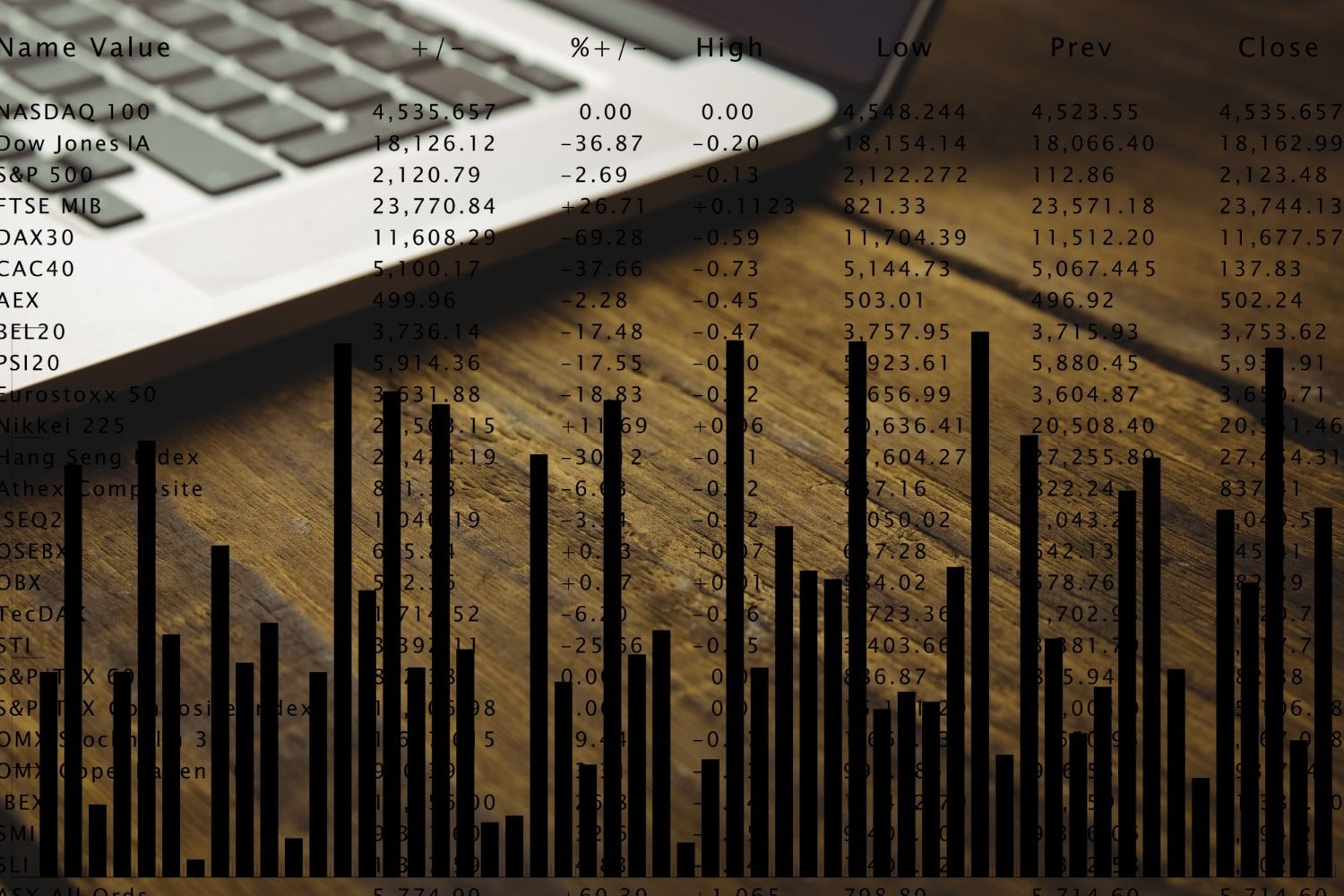
Mindset Mastery: The Real Difference Between Success and Failure
Successful day trading futures requires far more than technical knowledge. The psychological demands exceed almost any other professional endeavor. The market delivers constant feedback -- both financial and emotional -- during every minute you trade.
The first psychological challenge is managing the leverage effect. A single ES contract can swing your P&L by hundreds of dollars in seconds. This magnification works on your emotions too, amplifying both excitement and fear. Winning trades trigger dopamine surges that can lead to overconfidence. Losing trades activate threat responses that compromise decision-making. Both responses must be recognized and regulated.
Developing discipline over seeking excitement forms the foundation of sustainable trading. Most new traders chase the exhilaration of big wins rather than the consistency of small edges applied repeatedly. This fundamental mistake manifests in several ways:
-
Overtrading during slow markets
-
Holding positions beyond planned exits, hoping for bigger profits
-
Revenge trading after losses
-
Position sizing based on profit potential rather than risk parameters

Practical techniques for emotional regulation include:
- 1.
Pre-market routines: Develop a consistent preparation ritual before trading
- 2.
Physical anchoring: Use specific breathing patterns or posture changes when feeling emotional pressure
- 3.
Decision frameworks: Create explicit checklists for entries and exits that bypass emotional reactions
- 4.
Exposure therapy: Gradually increase position size to build tolerance for larger P&L swings
One technique we've found particularly effective: the "one-more-confirmation" rule. When you feel an urgency to enter a trade immediately, force yourself to wait for one additional confirmation signal. This simple pause often prevents impulsive decisions.
Psychological burnout represents the hidden danger in futures day trading. Even profitable traders often quit because the emotional toll becomes unsustainable. Prevention requires:
-
Trading fewer hours with greater focus rather than marathon sessions
-
Taking regular breaks, especially after strings of losses
-
Setting realistic daily profit targets and stopping when reached
-
Creating clear boundaries between trading and personal life
Risk Management: The Non-Negotiable Rules for Survival
In futures trading, proper risk management isn't just a best practice -- it's survival. The leverage that makes futures attractive also makes them dangerous. A single undisciplined trade can devastate an account that took months to build.
The fundamental principle is the 1-2% risk rule: never risk more than 1-2% of your total trading capital on any single trade. This applies regardless of how "certain" a setup appears. For example, with a $25,000 account, your maximum risk per trade should be $250-$500. This seemingly conservative approach serves two critical purposes:
- 1.
It prevents catastrophic drawdowns that force you out of trading
- 2.
It reduces emotional pressure on each trade, improving decision quality
Calculating per-trade risk in futures requires understanding both stop placement and contract sizing. For example, if trading ES with a 4-point stop loss (equivalent to $200 per contract), a $50,000 account risking 1% ($500) could trade a maximum of 2 contracts. Many new traders make the mistake of selecting position size first, then finding a stop that fits. Always reverse this process: determine your logical stop first, then calculate the appropriate position size.
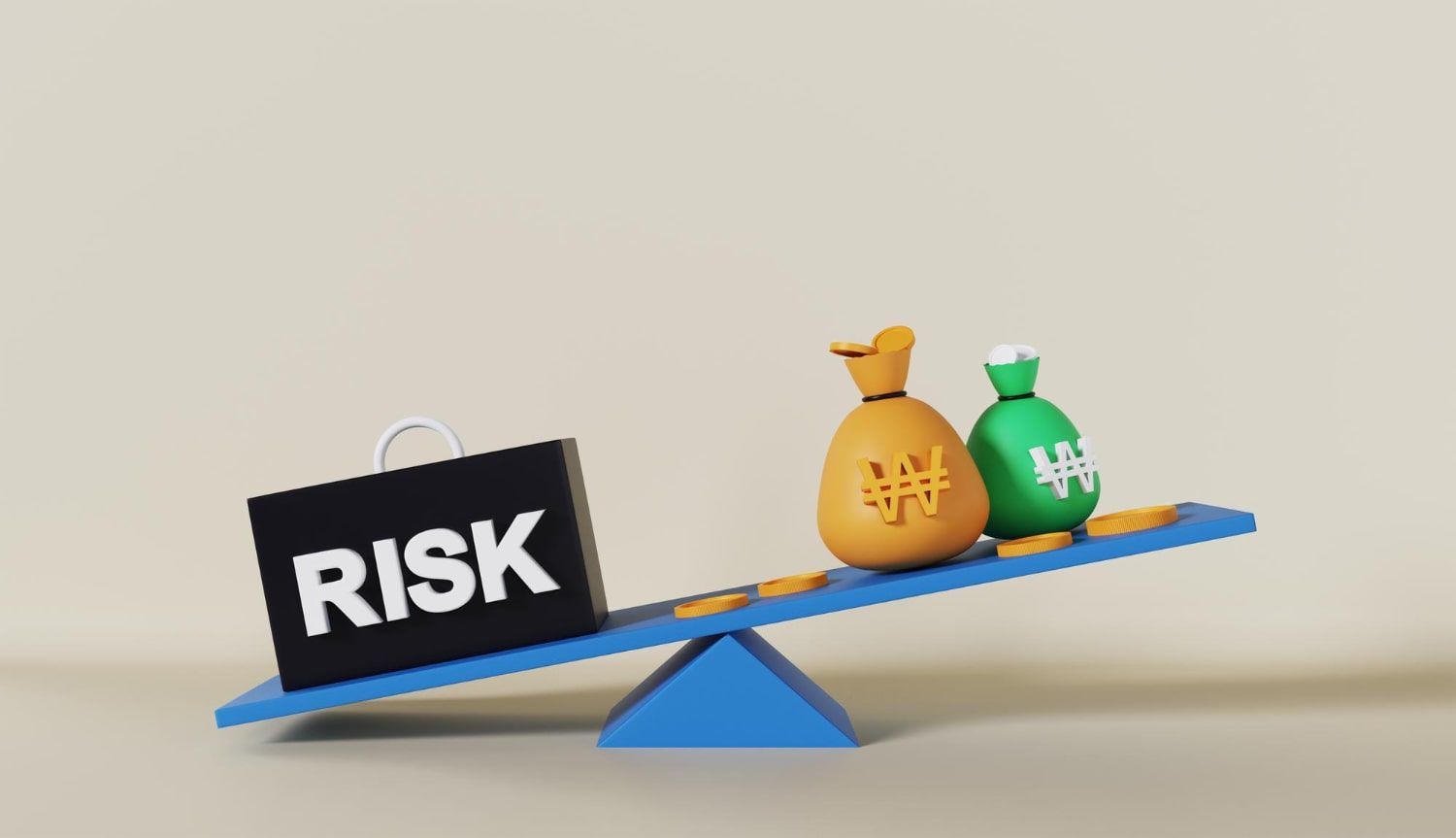
Practical stop loss placement in futures markets requires understanding each market's volatility characteristics. Technical stops should account for:
-
Average true range (ATR) of the timeframe you're trading
-
Nearby structural support/resistance levels
-
Typical noise range of the contract
For example, an ES day trade might use a stop 1.5-2 times the current 30-minute ATR beyond the nearest significant support level.
At MyFundedFutures, our consistency rules provide additional risk guardrails that prevent account blow-ups. For instance, our Starter accounts feature a 40% consistency rule in the funded stage -- meaning no single day's profit can exceed 40% of your total profits. This natural risk governor prevents the "hero trade" mentality that often leads to disaster. Traders initially resist such constraints but later appreciate how these rules enforce discipline.
The challenge for many traders is following these risk parameters consistently. This is where funded accounts provide a significant advantage. When trading our capital rather than your own, the risk parameters become non-negotiable trading rules that build proper habits. Traders who master risk management within funded structures often find these disciplines transfer naturally when they later trade independent capital.
Remember: in futures trading, defense comes before offense. The best traders prioritize capital preservation over profit maximization, knowing that protecting your account during difficult periods ensures you'll be around to capitalize on favorable ones.

Three Practical Day Trading Strategies That Actually Work
While countless futures day trading strategies exist, beginners should focus on straightforward approaches with clear rules. Complex systems often fail under pressure when real money is at stake. These three strategies provide a solid foundation that works across different market conditions.
Support & Resistance Trading
Support and resistance zones create high-probability reversal points in futures markets. Unlike single price levels, we focus on zones where multiple technical factors converge:
-
Previous day's high/low
-
Round numbers (especially in ES and CL)
-
Volume profile nodes
-
Key moving averages (50 and 200-period)
The practical setup requires:
- 1.
Identification: Mark major support/resistance zones on your chart before the session
- 2.
Confirmation: Wait for price to approach the zone and show rejection (candlestick reversal pattern)
- 3.
Volume validation: Look for expanding volume during the rejection, indicating real participation
- 4.
Entry: Enter after the first pullback following the rejection
- 5.
Stop placement: Place stops beyond the extreme of the zone (typically 2-4 points in ES)
- 6.
Target: Use the previous swing point or 1:1.5 risk-reward minimum
This approach works particularly well during range-bound sessions. The key advantages are well-defined risk parameters and clear invalidation points. New traders should avoid counter-trend trades at support/resistance during strong momentum moves.
Momentum Trading
Momentum strategies capitalize on established intraday trends. The goal is joining an existing move rather than predicting its start. This strategy excels during trending sessions but requires strict discipline to avoid chasing exhausted moves.
The practical setup includes:
- 1.
Trend identification: Establish the primary trend direction using 15-minute higher highs/lows
- 2.
Pullback recognition: Wait for a shallow retracement (typically 30-40% of the previous swing)
- 3.
Entry trigger: Enter when price resumes the primary trend direction with increased volume
- 4.
Stop placement: Place stops below the pullback low (for longs) with an additional buffer
- 5.
Trade management: Use trailing stops that lock in profits as momentum continues
Always compare the current move to the average daily range -- entering after 70% of normal range has been exhausted significantly increases risk.
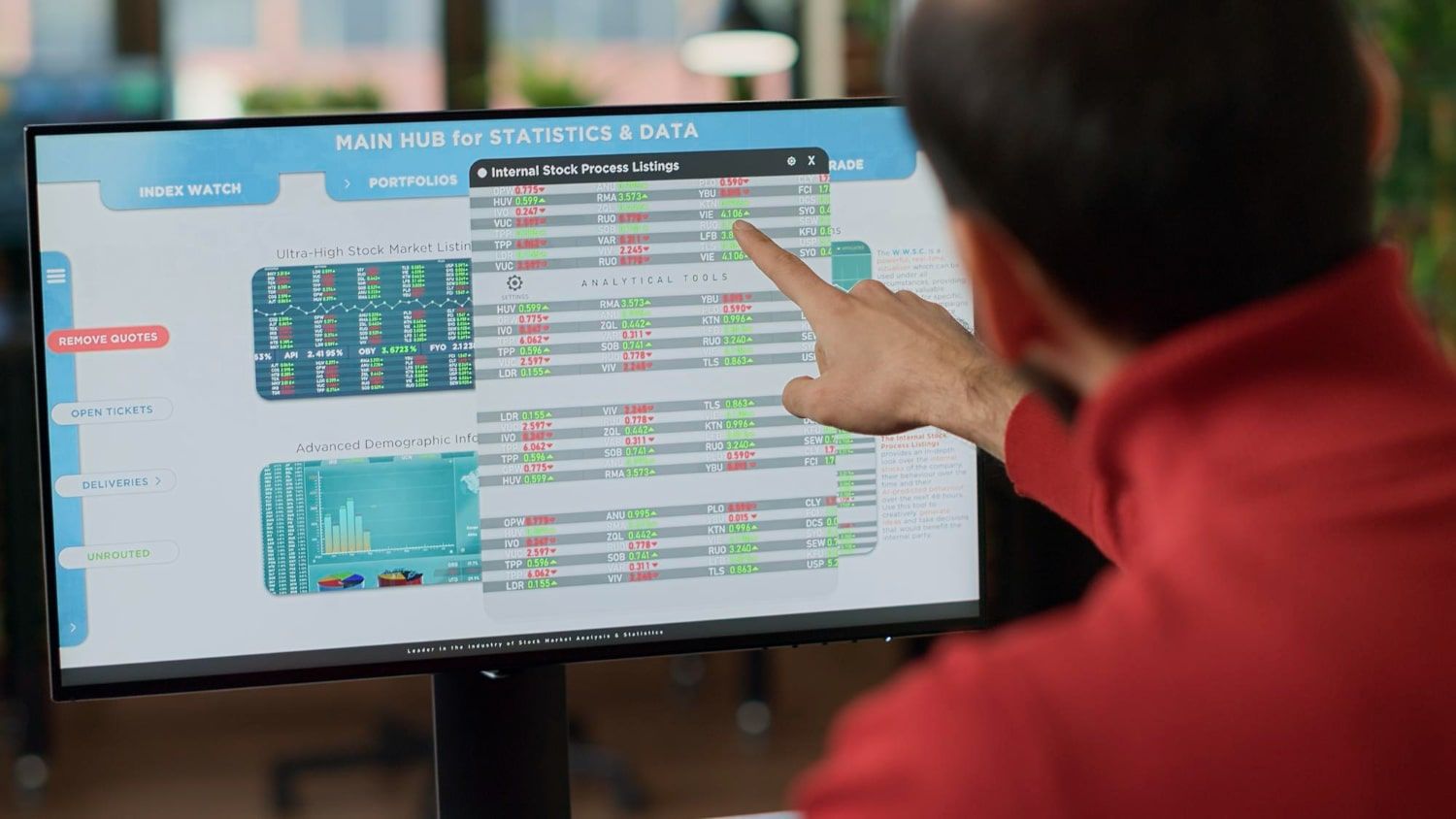
Opening Range Breakouts
The market's first hour often establishes the day's direction and range. Opening range breakout strategies capitalize on this tendency across futures trading markets.
The practical application:
- 1.
Range definition: Define the first 30-minute high and low after the main session opens
- 2.
Breakout alert: Watch for price to exceed either boundary with conviction
- 3.
Confirmation: Wait for a successful retest of the broken level
- 4.
Entry: Enter after the retest with a limit order
- 5.
Stop placement: Place stops inside the original range
- 6.
Target: Use a minimum 1:1.5 risk-reward or the previous day's swing point
This strategy performs best on days with clear directional bias, particularly after news catalysts or following inside days. It struggles during low-volume, choppy sessions. The advantage for beginners is the clearly defined parameters that minimize subjective decision-making.
Matching Strategies to Market Conditions
The most common mistake is applying the wrong strategy to current market conditions. Each approach above works best in specific environments:
-
Support/resistance trading: Range-bound, rotational markets
-
Momentum trading: Trending, high-volume sessions
-
Opening range breakouts: Normal to high volatility days with catalysts
Start each session by assessing the likely market type based on pre-market activity, overnight developments, and economic calendars. This initial classification should guide your strategy selection.
Your personality and risk tolerance should also influence strategy choice. Methodical, patient traders often excel with support/resistance approaches, while those comfortable with faster action might prefer momentum strategies. The key is aligning your trading approach with both market conditions and your psychological strengths.
The Essential Toolkit: What Matters vs. What's Just Noise
The tools you use for day trading futures significantly impact your performance, but the marketplace is filled with unnecessary complexity. Many traders get lost in an endless pursuit of new indicators and platforms while overlooking the fundamentals that actually matter. Let's focus on the essentials.
Platform Requirements That Impact Profitability
Your trading platform should function as a seamless extension of your trading process. The critical features that genuinely affect performance include:
-
Execution speed: Sub-second order placement and confirmation
-
Stability: No crashes during high-volatility periods
-
Flexible charting: Multiple timeframe viewing with clean visuals
-
Hotkey capability: Rapid order execution with pre-set parameters
-
Reliable data feed: Accurate pricing without delays
We've found that platforms like NinjaTrader, TradingView, and Sierra Chart provide excellent foundations for day traders. For our funded traders, we support multiple platforms: NinjaTrader, Tradovate, and Quantower, allowing flexibility based on your specific requirements.
Avoid platform complexity that leads to information overload and decision paralysis. Many professional traders use surprisingly simple setups, focusing on price action clarity rather than dozens of indicators.
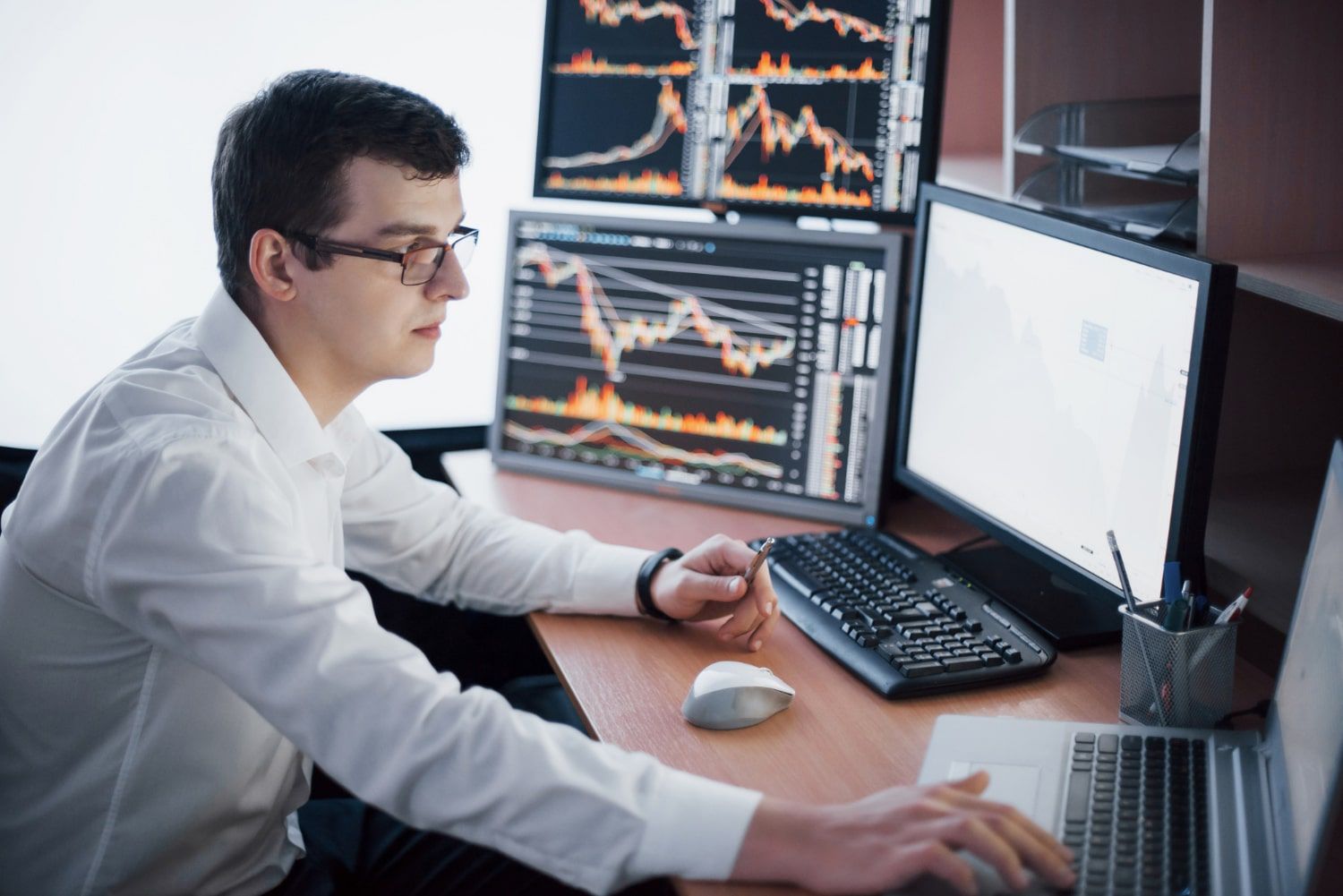
Chart Setups That Provide Clear Decision Points
Effective chart setups highlight the information needed for decisions while filtering out noise. The core elements include:
-
Clean price bars: Candlesticks or bars with sufficient but not excessive detail
-
Multiple timeframes: Typically 3 related timeframes (such as 5-min, 15-min, and 60-min)
-
Volume representation: Volume at price or standard volume histogram
-
Key support/resistance levels: Previous day high/low, significant swing points
-
Session divisions: Clear markers for overnight, European, and US sessions
The specific settings matter less than consistency. Your charts should highlight the same information across different markets and timeframes, creating a unified visual language for analysis.
The Only Indicators Day Traders Really Need
While thousands of indicators exist, successful traders typically rely on a small handful that provide genuine insight:
-
Volume-based tools: Volume profile, delta, or cumulative volume delta
-
Market internals: TICK, ADD, or futures market breadth for confirmation
-
Volatility measures: Average True Range (ATR) for stop placement
-
Simple moving averages: Primarily the 20, 50, and 200-period for context
These indicators serve specific purposes in decision-making rather than generating independent signals. For example, ATR helps size stops appropriately, while volume analysis confirms price movement validity.
Most importantly, any indicator should have a specific role in your decision process. If you can't articulate exactly how an indicator influences your entries, exits, or risk management, remove it from your charts.
Decision Support Tools Worth The Investment
Beyond basic charting, certain specialized tools provide genuine advantages:
-
DOM (Depth of Market) displays: Show order flow and market depth
-
Advanced order types: OCO (one-cancels-other) and bracket orders
-
Multi-monitor support: Dedicated screens for different analysis perspectives
-
Journaling software: For performance tracking and pattern identification
Remember that tools should reduce, not increase, decision complexity. The best setups create a streamlined information environment where important signals stand out clearly from background noise.
Your Practical Path to Consistent Futures Trading
The journey to consistent futures day trading follows a more predictable path than many realize. Understanding this progression helps set realistic expectations and focus on the right skills at each stage of development.
Months 1-3: Mastering the Fundamentals
The first three months should focus entirely on education and simulation trading. Key priorities during this phase include:
-
Market mechanics: Understanding contract specifications, margin requirements, and trading hours
-
Platform proficiency: Developing muscle memory for order entry and chart navigation
-
Single strategy mastery: Learning one approach thoroughly before diversifying
-
Risk calculation: Practicing position sizing and stop placement methodologies
-
Journal development: Creating your trading documentation system
During this phase, avoid the temptation to trade multiple strategies or markets. Narrow focus accelerates learning. Most traders also benefit from extended simulation periods -- switching to live trading too early often creates psychological scars that take months to overcome.
Success metrics for this phase should emphasize process consistency over profit. Track adherence to your trading plan rather than focusing solely on P&L. The traders who rush this fundamental stage usually wash out within the first year.
Transitioning from Simulation to Live Trading
The psychological gap between simulation and live trading exceeds what most traders anticipate. Even small amounts of real capital trigger emotional responses that simulation never replicates. This transition phase requires careful management:
- 1.
Minimum viable size: Start with the smallest possible position size
- 2.
Rules-based execution: Follow explicit entry/exit rules without discretion
- 3.
Process focus: Evaluate trades based on adherence to process rather than outcome
- 4.
Regular debriefing: Document emotional responses alongside technical analysis
The funded approach offers several advantages:
-
Real money engagement without personal financial strain
-
External accountability to trading rules
-
Structured scaling process based on demonstrated profitability
-
Professional risk parameters that build proper habits
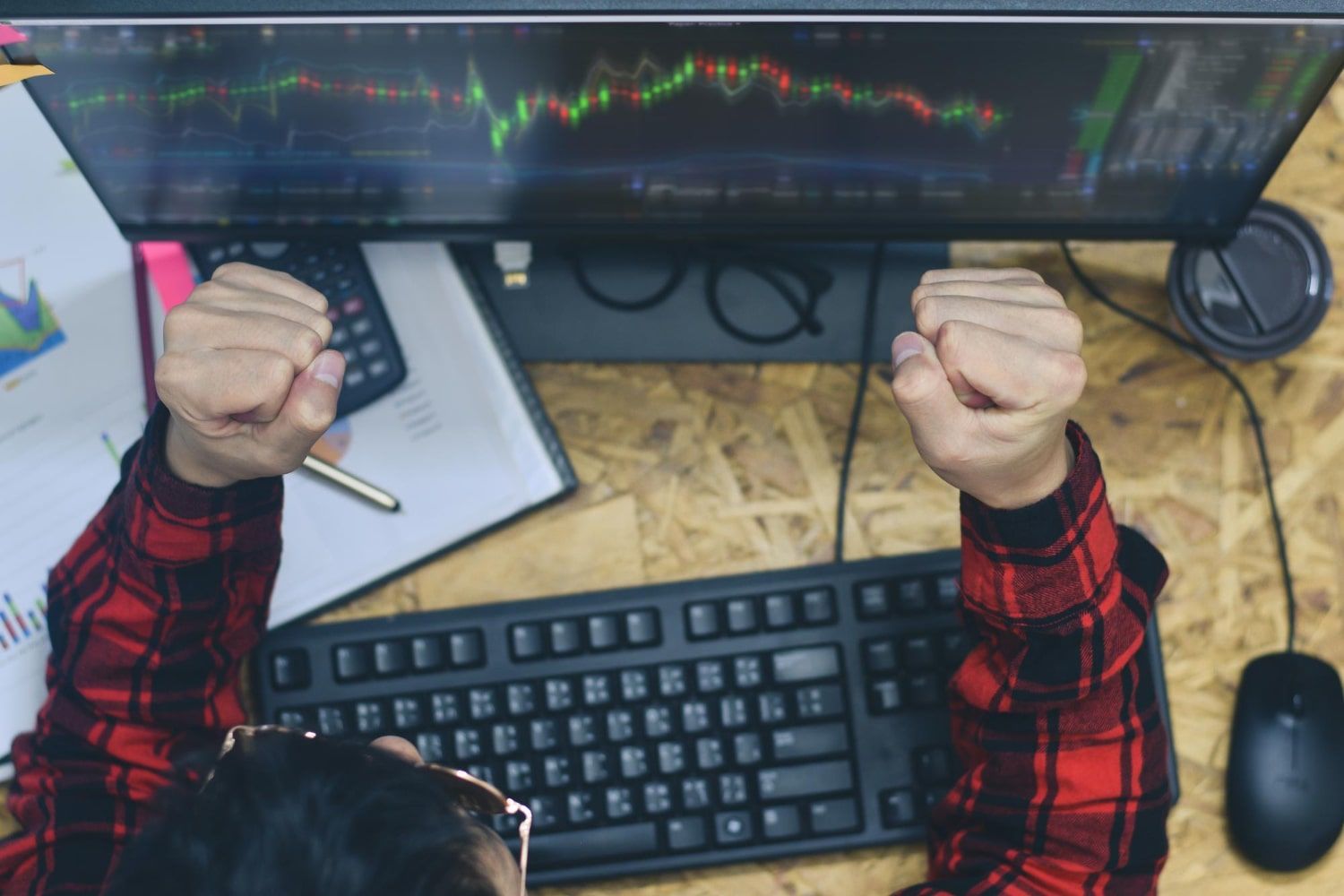
Measuring Progress Beyond P&L
Focusing exclusively on profit during early development creates counterproductive pressure. More valuable metrics include:
-
Trade quality score: Rating each trade's adherence to your defined setups
-
Risk management consistency: Maintaining proper position sizing relative to the account
-
Psychological resilience: Ability to follow your plan after losing trades
-
Process refinement: Systematic improvement of your trading rules
Our most successful traders track these qualitative metrics alongside traditional P&L. This balanced approach maintains focus on long-term development while acknowledging the importance of profitability.
The typical progression sees traders achieve technical proficiency first, then psychological consistency, with sustainable profitability following naturally. Expect this entire process to take 6-12 months of dedicated effort, significantly longer than most traders initially anticipate.
Your Action Plan: Immediate Steps for Futures Day Trading Success
Translating knowledge into action separates successful traders from perpetual students. Here's a concrete action plan to implement what you've learned about futures day trading.
Build Your Daily Trading Routine
Professional traders operate from structured routines that optimize decision-making. Develop a consistent daily process:
- 1.Pre-market preparation (30-45 minutes before session):
-
Review overnight price action and key levels
-
Identify major economic releases or news events
-
Define primary support/resistance zones
-
Document the trading plan for specific setups to watch
- 1.Active trading session (2-3 hours maximum):
-
Execute only trades that match predefined criteria
-
Maintain a trade journal with real-time notes
-
Take short breaks every 45-60 minutes
-
Stop trading after reaching the daily loss limit or the profit target
- 1.Post-session review (30 minutes after trading):
-
Document all trades with screenshots and commentary
-
Calculate performance metrics
-
Identify pattern improvements for the next session
Most successful traders limit active trading to 2-3 hours during the most favorable market conditions for their strategy, typically the first 90 minutes of the primary session, plus specific volatility windows.
Implement This Trade Execution Checklist
Develop a standardized process for every trade to maintain discipline under pressure:
-
Pre-entry validation:
-
Does this setup match my trading plan?
-
Is the current market condition favorable for this strategy?
-
Have I confirmed on multiple timeframes?
-
Is the position size calculated for appropriate risk?
-
Management protocol:
-
Stop loss order is placed immediately after entry
-
Initial target identified with a minimum 1:1.5 risk/reward
-
Partial profit-taking rules are defined
-
Maximum holding time established
-
Exit discipline:
-
Exit signals are clearly identified before trade
-
No moving of stop losses once placed
-
Profit targets adjusted only to lock in gains
This structured approach transforms trading from reactive to procedural, dramatically improving consistency.

Connect with the Right Trading Community
Isolation amplifies the psychological challenges of trading. Connect with communities that provide support and accountability:
-
Join moderated trading communities with verified performance
-
Participate in strategy-specific discussion groups
-
Find accountability partners at similar development stages
-
Consider mentorship from established traders
At MyFundedFutures, our trader community provides exactly this support structure. Our Discord community connects traders at all levels, with moderators who provide guidance on strategy implementation, risk management, and the psychological aspects of trading.
Leverage Our Resources for Accelerated Development
We've developed specific resources to support your futures trading journey:
-
Our Evaluation-To-Live program provides a structured path to funded trading with graduated account sizes based on demonstrated performance
-
Our risk management parameters establish guardrails that protect you during the development phase
-
Our educational webinars address common challenges in futures trading
-
Our multi-platform support lets you choose the tools that best match your trading style
The path to consistent futures trading isn't easy, but it's far more achievable when you focus on the fundamentals that actually matter: disciplined risk management, straightforward strategies aligned with market conditions, and psychological resilience.
Start with these concrete actions, maintain realistic expectations about the development timeline, and remember that sustainable success comes from mastering the process rather than chasing outcomes.
Ready to dive in?
Explore our challenge accounts, pick the one that fits you best, and start your journey to getting funded.
Explore AccountsThis material is provided for educational purposes only and should not be relied upon as trading, investment, tax, or legal advice. All participation in MyFundedFutures (MFFU) programs is conducted in a simulated environment only; no actual futures trading takes place. Performance in simulated accounts is not indicative of future results, and there is no guarantee of profits or success. Fewer than 1% of participants progress to a live-capital stage with an affiliated proprietary trading firm. Participation is at all times subject to the Simulated Trader Agreement and program rules.
Frequently Asked Questions
Rate this article
Related Posts
Read our most popular posts
5 Best Prop Firms With TradingView Integration
TradingView's powerful charting tools and real-time data make it a favorite among futures traders, but not every prop firm lets you trade directly from your charts. We've identified five firms that offer true TradingView integration, making it easy to analyze, execute, and scale without switching platforms.
What Is MyFundedFutures Scale Account and Is It The Right Plan For You?
The MyFundedFutures Scale Account is a middle-tier evaluation plan that balances affordability with growth potential. The scale plan offers weekly payout opportunities with increasing withdrawal limits, no daily loss cap, and a clear path to live funding after just five consecutive payouts.
5 Best Prop Firms With NinjaTrader Integration
NinjaTrader's advanced charting and precision execution tools make it a top choice for active futures traders, but not every prop firm integrates it smoothly. We'll highlight five firms that support true NinjaTrader compatibility, how their setups compare, and which one gives you the most stable, consistent path from evaluation to funded account.
